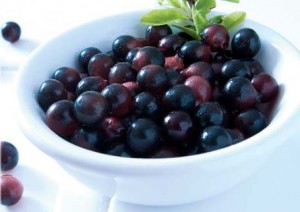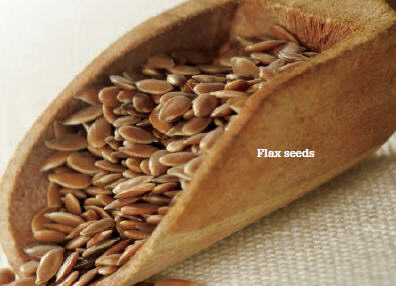Great foods to try in your diet
Agave nectar
Agave nectar was prized by the Aztecs as a gift from the gods. A natural sweetener and a healthier alternative to sugar and honey, the nectar (sometimes called syrup) has a consistency between honey and maple syrup.
With a significantly lower glycemic index than refined sugars, agave provides sweetness but not the blood sugar spike of other sweeteners. This makes it a wise choice (when used in moderation) for diabetics.
Light nectar has a mild, neutral flavor; amber agave has a slight caramel taste; darker agave has more distinctive caramel notes.
Recipe: Use agave nectar in hot and cold beverages (start with 1 teaspoon to 1 cup liquid), as well as baked goods.
For baking, substitute ¾ cup of nectar for 1 cup of sugar, and reduce other liquids in the recipe by a third. Lower oven temperatures by about 25 F and bake 10 minutes longer.
Agave nectar can be stored at room temperature after opening.
Quinoa
Called the mother grain by ancient Incas, quinoa is actually a seed related to spinach. A complete protein with all essential amino acids, quinoa is high in fiber, magnesium, potassium and iron; low in saturated fat and cholesterol; and gluten-free. Quinoa has a fluffy texture and a mild taste, and can be used on its own like rice, couscous or barley, or in salads, pilafs, casseroles and soups. In its natural state, quinoa has a coating of bitter-tasting saponins. While most quinoa sold commercially has been stripped of this coating, it’s still a good idea to soak it for 15 minutes and rinse before cooking.
Recipe: Prepare quinoa as you would rice. Boil 2 cups of water, or chicken or vegetable stock (quinoa benefits from some seasoning while cooking) and add 1 cup of quinoa. Simmer for 15 to 18 minutes, or until the germ separates from the seed (it’ll still have a slight bite). Hot quinoa is also good for breakfast with cinnamon, nuts, fruit and honey.
Steel-cut oats
Unlike rolled oats, which are flattened, steel-cut oats (also called coarse-cut or Irish oats) look like small kernels of golden rice. They are rich in fiber; are a good source of vitamins B1, B2 and E; and contain gamma-linoleic acid (GLA), an essential fatty acid. Research shows eating unprocessed oats regularly can help lower blood cholesterol levels and stabilize blood sugar.
Recipe: To cook, add one part steel-cut oats to four parts boiling water. When the porridge begins to thicken (four to six minutes), reduce heat and simmer for 30 to 40 minutes. To cut cooking time, the night before add one part oats to four parts water. Boil for one minute, stir and cover, then turn heat off and leave until morning. Cook as above, simmering until done, approximately 10 to 15 minutes.
Steel-cut oats can also be cooked in the microwave: Mix ½ cup oats with 2 cups water in a large, microwaveable bowl. Cook on high four to six minutes. Remove from microwave, stir and cook for another four to six minutes on high. Steel-cut oats remain chewy even after soaking and cooking.
Acai berries
 The acai berry (which grows only in the Amazon) is said to be one of the most nutritionally dense berries on the planet, with between 10 and 30 times more antioxidants than grapes, pomegranates and blueberries. It’s also rich in vitamins, minerals and essential fatty acids, which help prevent heart disease and lower cholesterol. The acai berry is highly perishable and not available fresh. It’s sold instead as a powder, capsule or liquid.
The acai berry (which grows only in the Amazon) is said to be one of the most nutritionally dense berries on the planet, with between 10 and 30 times more antioxidants than grapes, pomegranates and blueberries. It’s also rich in vitamins, minerals and essential fatty acids, which help prevent heart disease and lower cholesterol. The acai berry is highly perishable and not available fresh. It’s sold instead as a powder, capsule or liquid.
Enjoy acai on its own as a fruit juice drink (it tastes like a combination of blueberries and chocolate), or add acai powder to smoothies and other juices. It’s also delicious sprinkled on fruit salads.
Flax
These tiny brown seeds (or gold ones—there’s no difference) are rich in omega-3 fatty acids, alpha-linolenic acid (ALA), lignans and fiber. Studies suggest they help lower the risk of heart disease, protect against certain types of cancer, lower the risk of inflammation that leads to some immune diseases and guard against constipation. Whole flax seeds add color and crunch to cookies, cereals, salads and pilafs. But because whole seeds are hard to digest, it’s best to whirl them in a coffee grinder (used expressly for that purpose) before using or buy milled flax seeds. Sprinkle the powder onto cereal or add it to dough, batter, casseroles and other cooked food. Flax oil, which provides ALA but no fiber or lignans, is excellent on fresh salads.

Flax seeds can be stored at room temperature, but ground flax seeds and flax oil should be refrigerated.
Start out easy—too much flax can initially upset your digestion. The Flax Council of Canada recommends 3 teaspoons of milled flax or 1 teaspoon of flax oil daily.
Spelt
In cultivation for thousands of years, spelt is referred to as the grandfather of common wheat. High in fiber and rich in B vitamins, spelt also contains a more easily digestible protein than regular wheat, making it popular with people who have an intolerance or allergy to traditional wheat. However, it does
contain gluten, making it unsuitable for those with celiac disease.
Replace a portion of wheat flour in any recipe with an equal amount of nutty-tasting spelt flour. Because of its lower gluten content, loaves won’t rise as high, but that’s not an issue for cookies or flatbreads such as pizza dough and pita bread. Whole spelt berries can be soaked overnight and cooked like rice or added to soups like barley or other grains.
Costoco News

